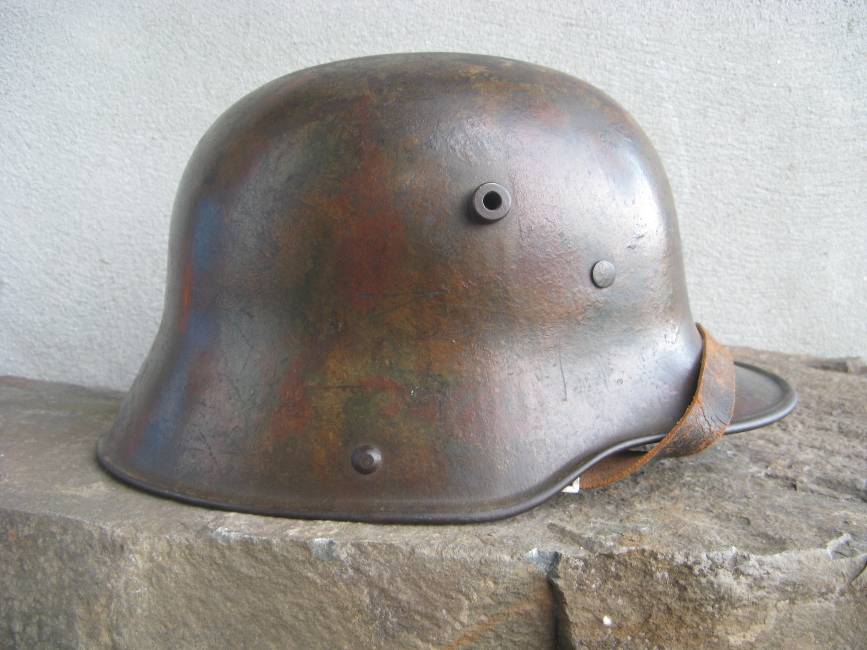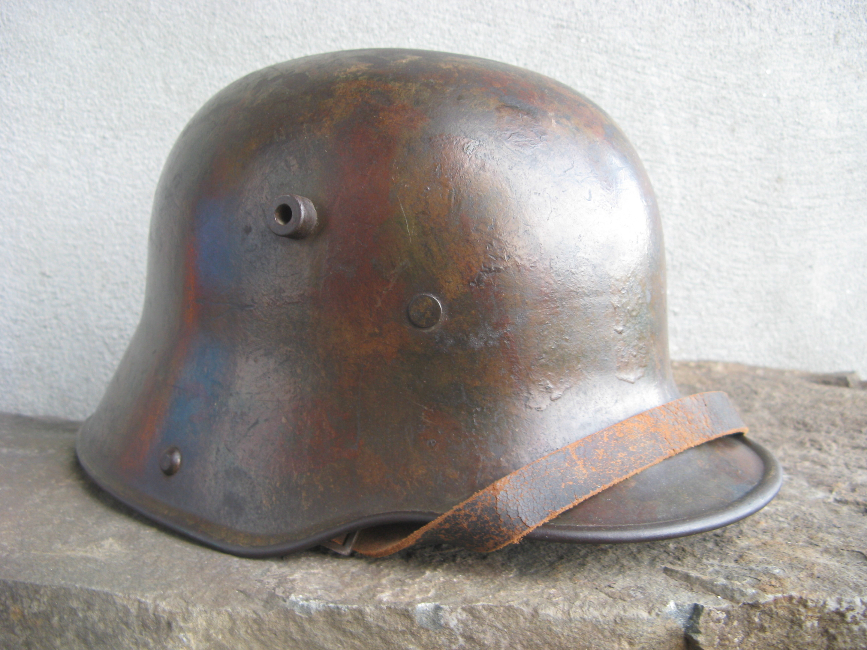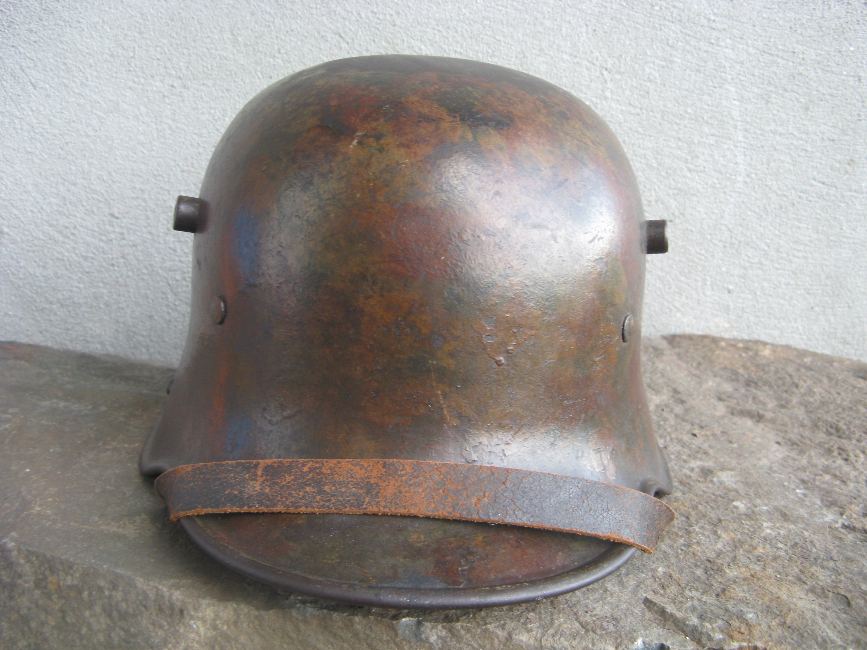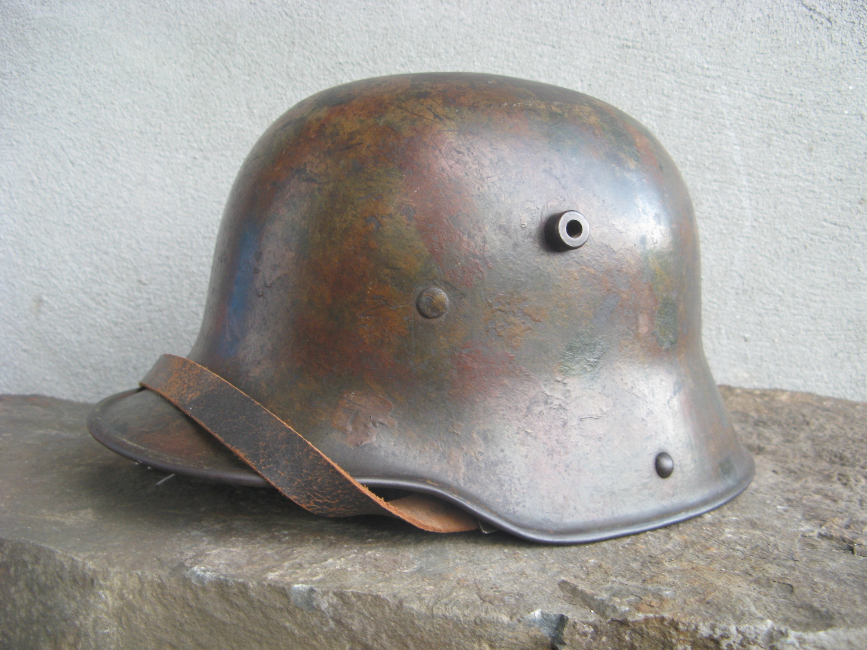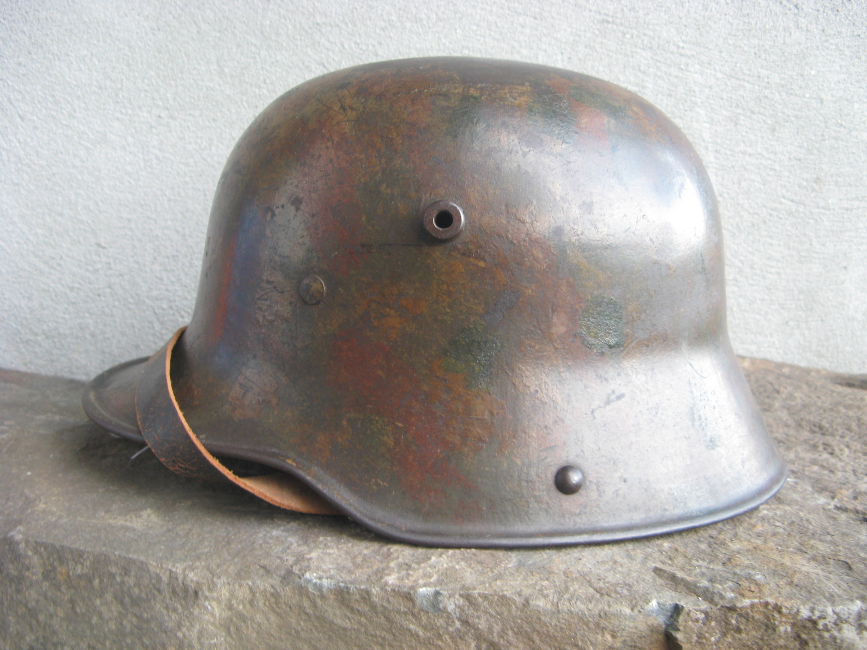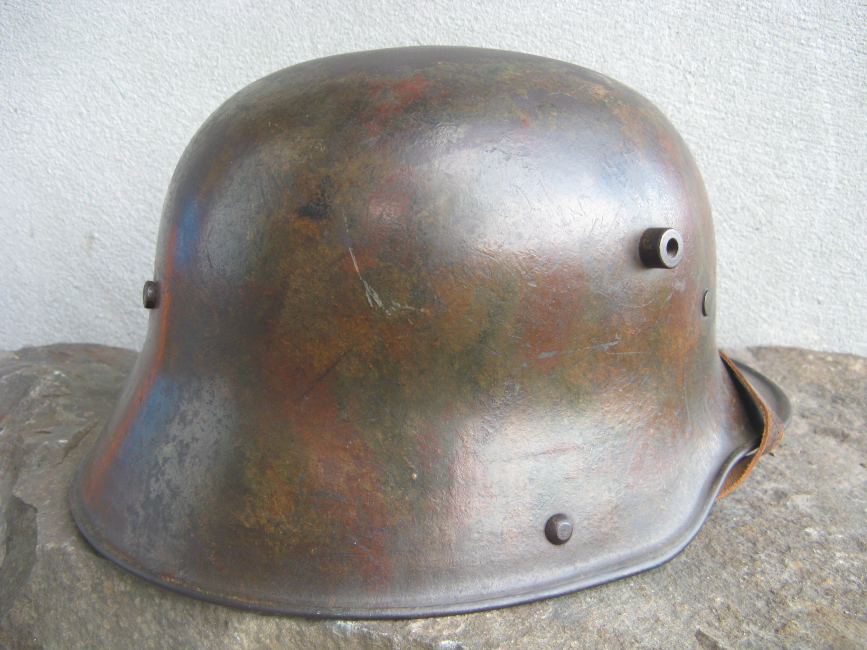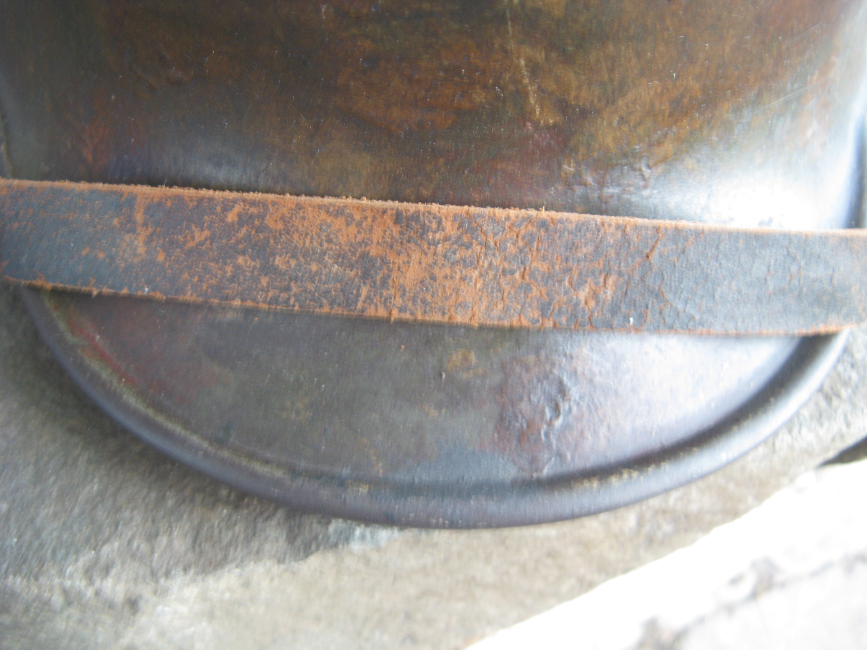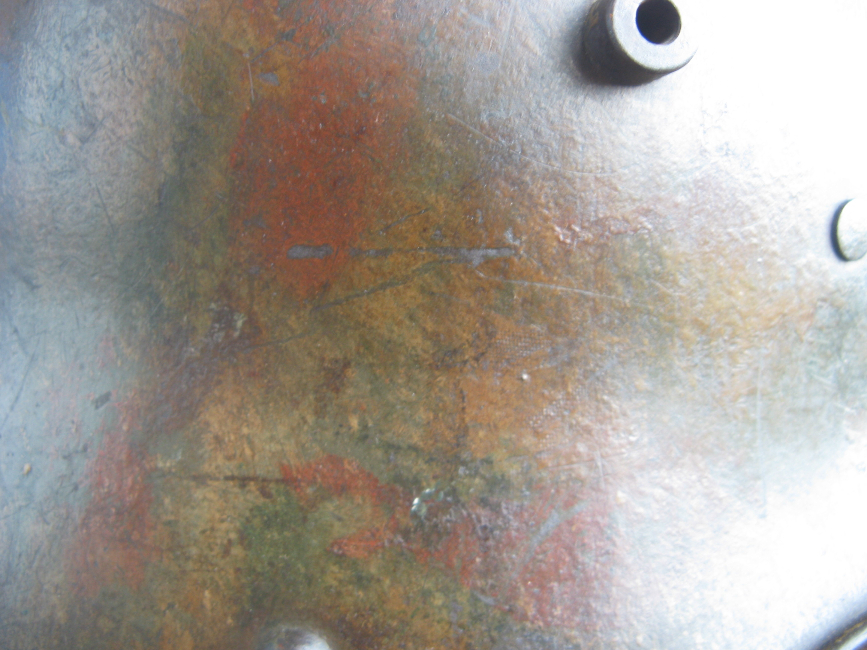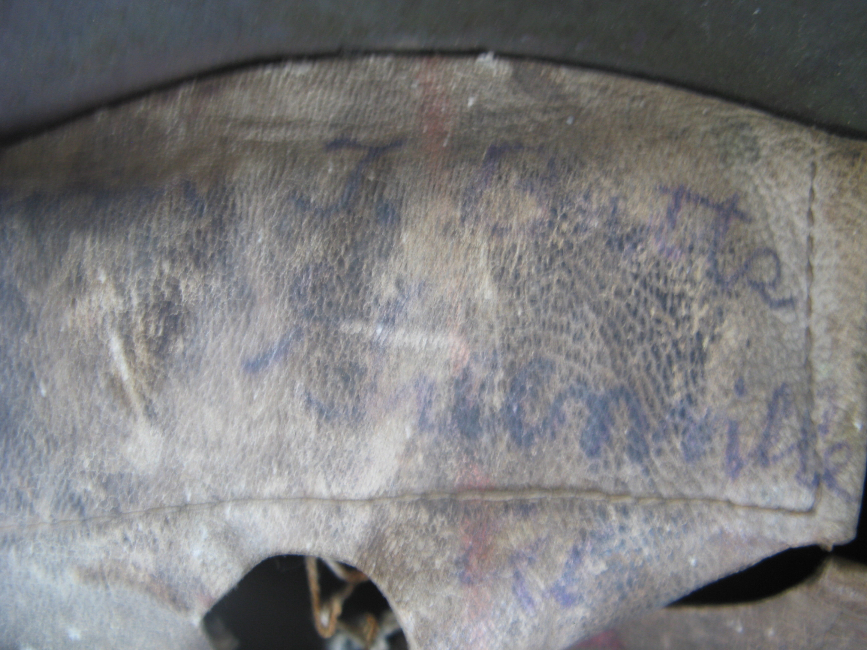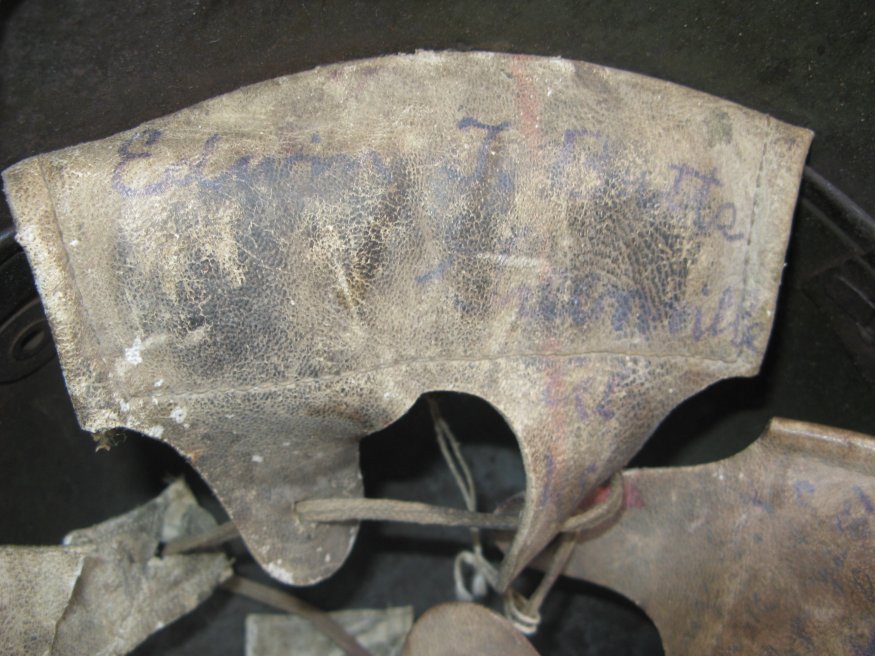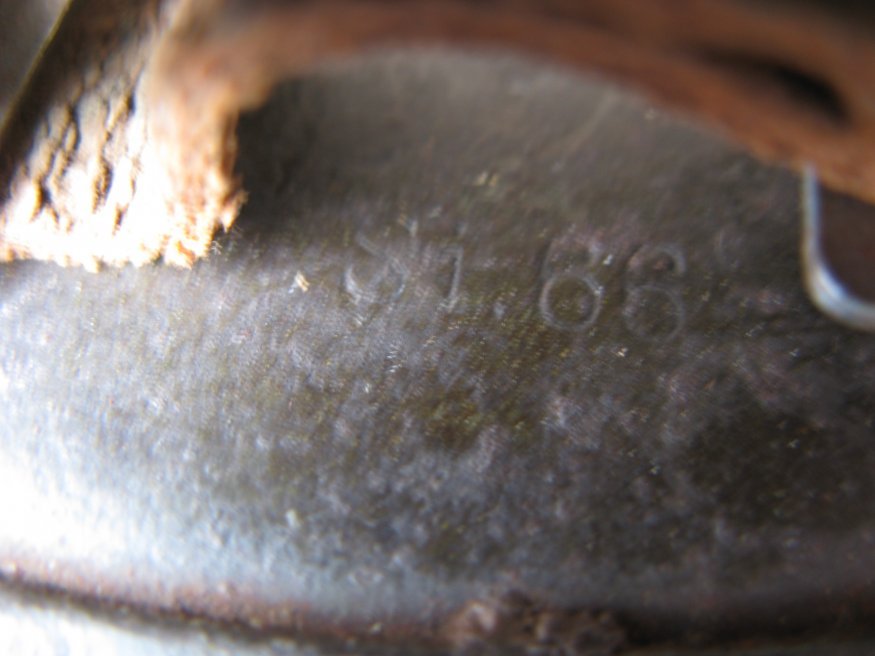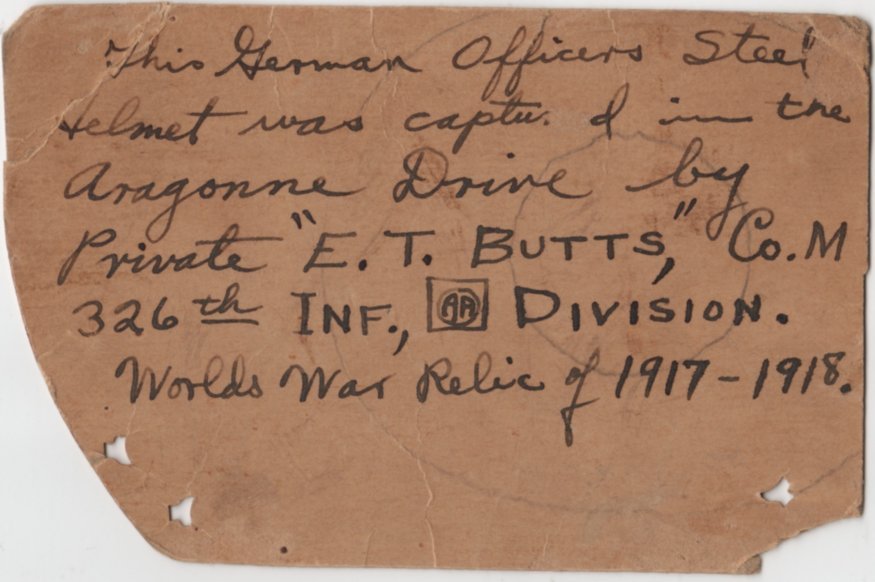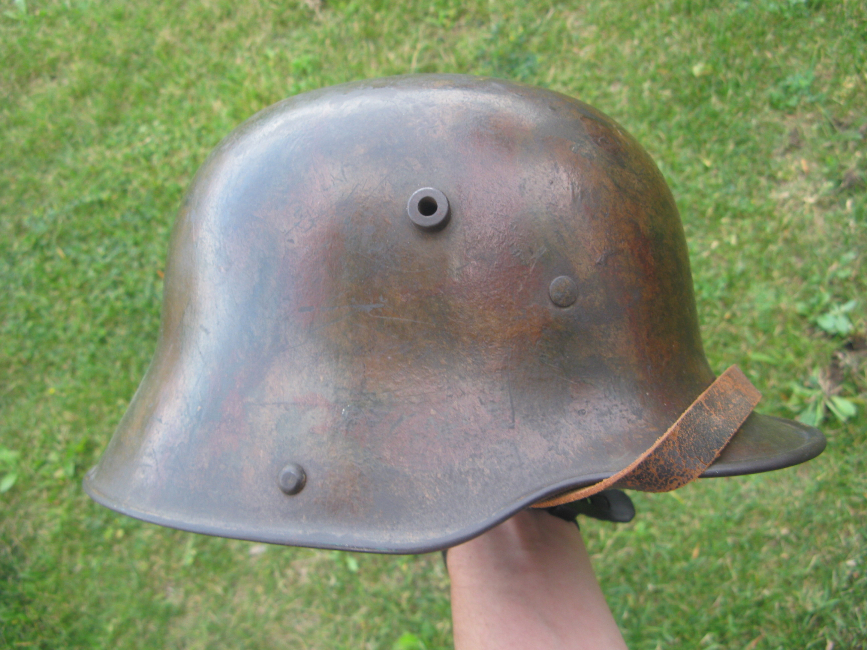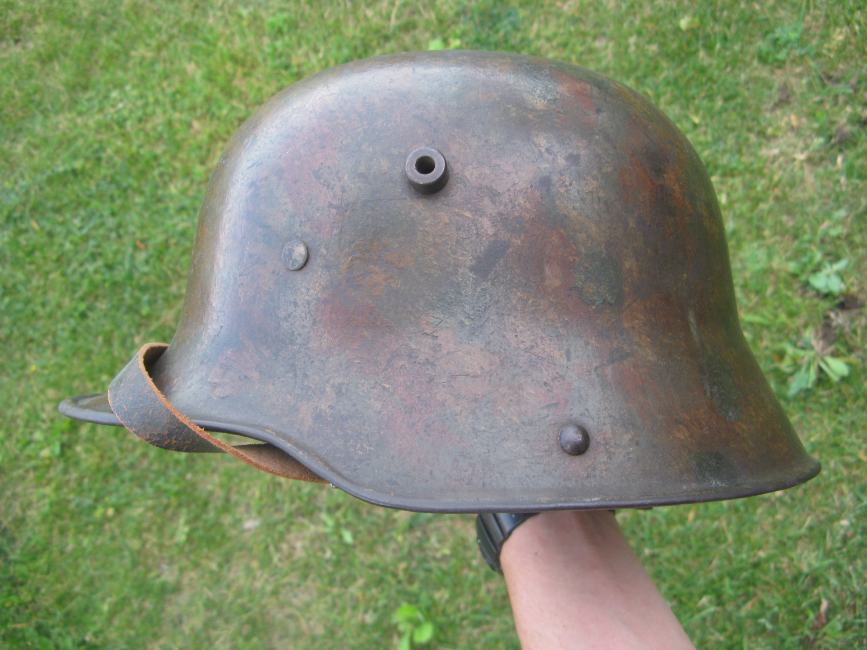The splotchy style pattern is rather unique accounting for only about 20% of WW1 camo patterns which are usually dominated by the classical tortoise shell camo pattern. The fact that this particular solider ignored orders and painted it his own way further suggests to me that he was most likely an officer like the inscription on the liner claims as he was more free to do as he pleased that the average man at the front.
Original hand written cardboard paper from the 1950's documenting the WW1 soldier's inscription on leather liner while it was more visible. This was a private purchase directly from a Sheriff in Kentucky. His father owned it all his life and traded for it back in the early 1960's for a pellet gun. I am willing to supply the name, email address and telephone number of the Sheriff as I feel the provenance should stay with the helmet. He told me that his father traded a pellet gun for this helmet from an older gentlemen who possibly was a WW1 vet himself in their small town. The Sheriff told me that there were so many WW1 and WW2 souvenirs floating around the area that growing up he remembers German lugers, daggers, Nazi coins etc being traded freely and sometimes even making their way into local poker games. The card board inscription was actually written back in the 1950's by the Sheriffs own mother he told me she loved to catalogue and label everything she deemed of importance in their house. Lucky for us and lucky for history she did as the ink writing on the leather tongues is now only about 60% legible so at least we know exactly what it said when it was more clearly visible. Upon some further research I discovered that one of the regiments involved in the Aragonne Drive was also the exact same regiment that Sgt.York himself fought with!!!
Neat Factoid: In 1917 the tanning solution was changed from a vegetable based chemical which turns the leather liner a honey brown hue to a chromium based tanning solution which turns the leather white. This is the way we can determine if a particular WW1 helmet is an M16 or M17 model. The M18's are easy to spot as they do not have the two chinstrap rivets poking out near the rim of the shell. A fellow collector recently told me that the white leather was indicative of rabbit skin as opposed to steer hide but I'm not entirely sure about that particular supposition.
$1500.00 SOLD (Matt Shaughnessy)

